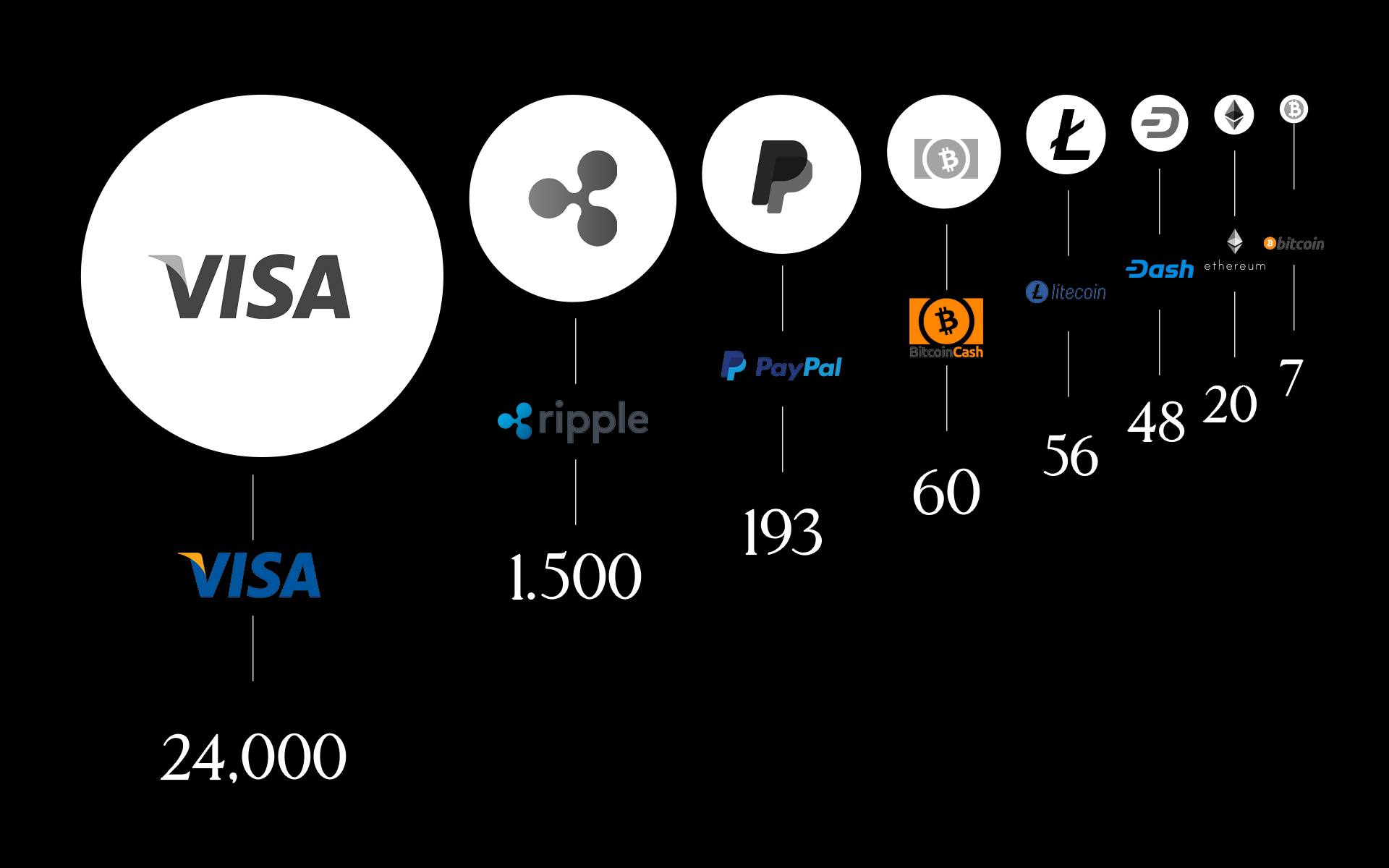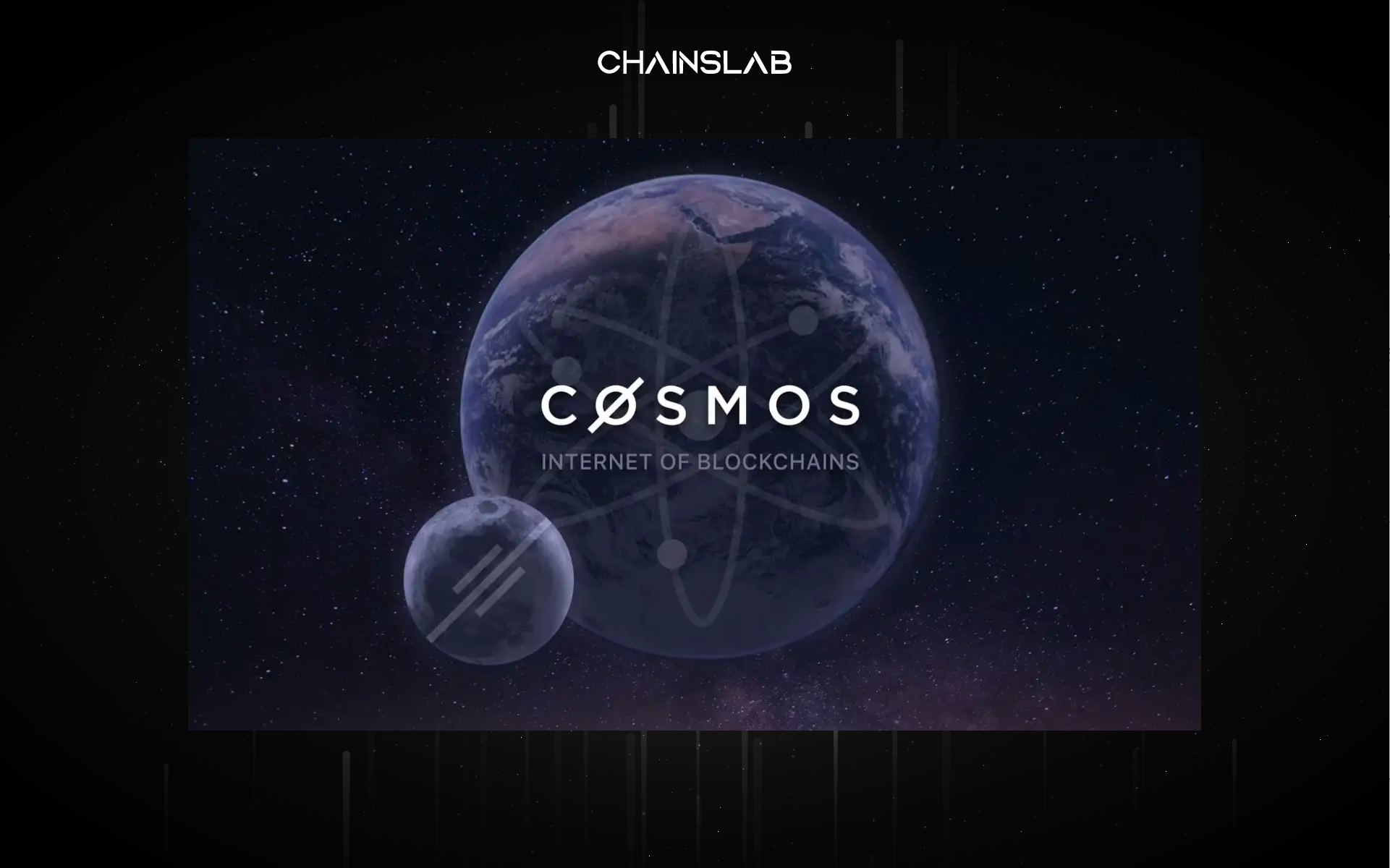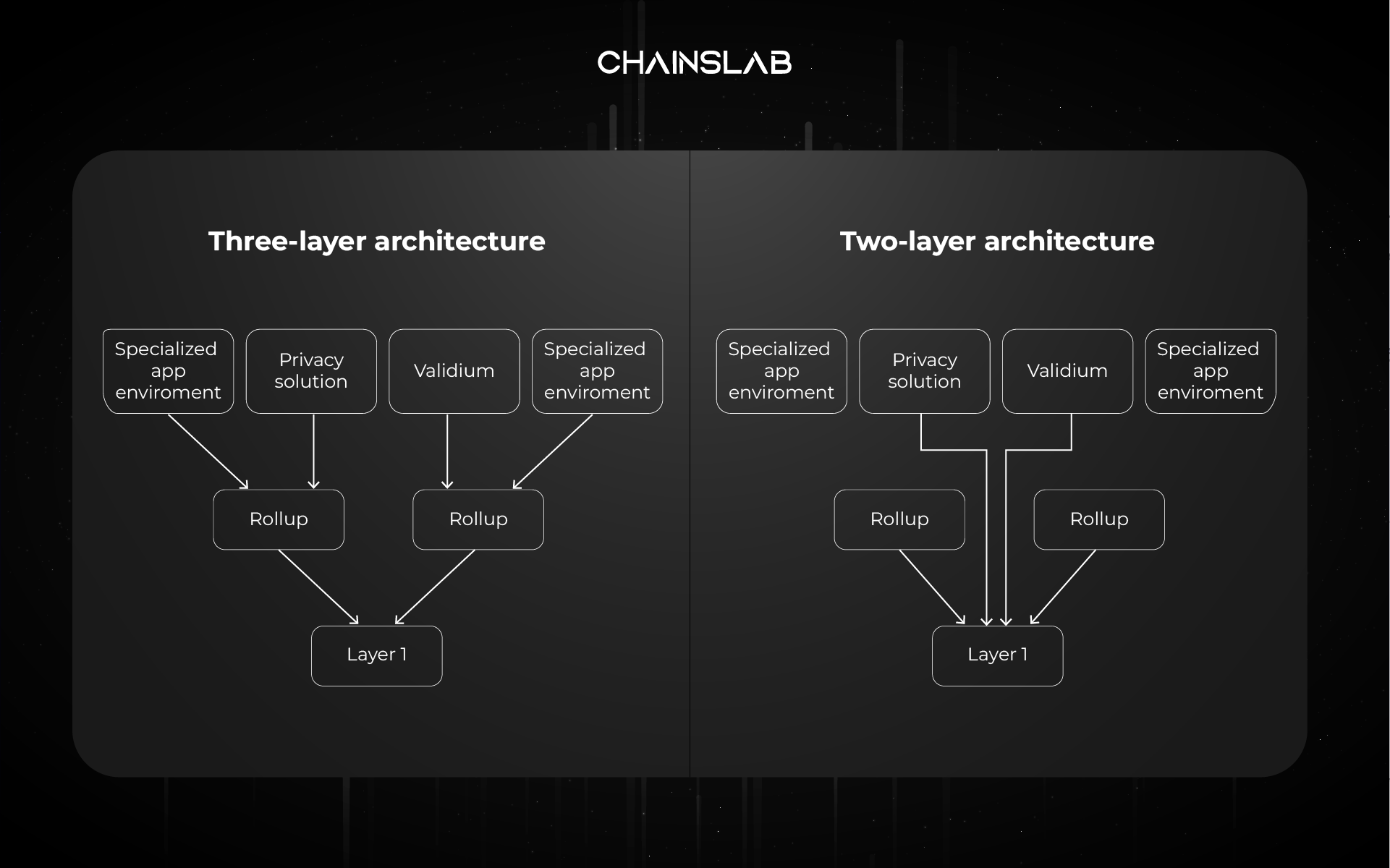In blockchain technology, the term “scaling” refers to an increment in the system throughput rate, as measured by the number of transactions performed per second. Blockchain adoption continues to grow, and so does the importance of scaling in the ecosystem. New applications and increased transaction volume can be accommodated with the help of system throughput rate improvements. Thus, with the increasingly prevalent use of cryptocurrencies in everyday life, it has now become necessary to create blockchain layers for better network security, record keeping and a lot more.

Saying blockchain is like onions, because onions have layers, and the blockchain also has layers. If you’ve been in the world of blockchains for some time now, you would have definitely heard of terms like layer 2 blockchains, helping alleviate the scaling troubles that blockchains are infamous for. The scaling trilemma is seen to be one of the greatest limitations stopping blockchains from being popularly adopted. One could argue that this would solve the adoption problem that cryptocurrencies are facing currently.
Let’s peel the blockchain layers one at a time.
TL; DR
- Layer 0: Enables cross-chain interoperability between Layer 1 protocols (e.g. Cosmos).
- Layer 1: The base blockchain network. They validate and finalize transactions but have issues with scaling (Bitcoin).
- Layer 2: A scaling solution to Layer 1 protocols. It creates a secondary framework which is used for transactions "off-chain" (Bitcoin Lightning Network).
- Layer 3: Enables blockchain-based dApps, games, and more. Also known as the application layer (Uniswap).
I. What Is A Blockchain Layer 1 Vs. Layer 2?
Layer 1 in a decentralized ecosystem is the blockchain itself. On the other hand, Layer 2, is a third-party integration combined with Layer 1 to increase the number of operating parameters (nodes, subsequently, throughput,...).
Layer 1 (L1)
A Layer 1 blockchain is the foundation layer of every blockchain network. Simply put, it’s a network that functions as an infrastructure for other protocols, apps and networks on which to build. L1 is in charge of programming languages and conscious processes, as well as rules and parameters that allow a blockchain network to properly function.
The best-known examples of L1 blockchains are Ethereum, Bitcoin, or new rising names are Solana, Avalanche, Aptos, etc.
Even though all L1 blockchains have some similarities, they differ in many ways, including:
- Block validation (PoW, PoS or PoA).
- Number of blockchains in their ecosystem.
- Interoperability with other networks.
- Scalability.
While you can modify a L1 blockchain, it’s far easier and cheaper to build a L2 solution on top of it. Doing this won’t change anything in the first layer. However, it will allow users to enjoy benefits such as quicker transactions and additional features.
Layer 2 (L2)
Currently, a variety of L2 blockchain solutions are being implemented.
A Layer 2 blockchain is a blockchain that acts as infrastructure and runs in parallel to another blockchain, like Bitcoin or Ethereum. A L2 solution enables a high number of transactions per second (TPS) by using the primary chain for final settlement only.
For instance, someone who uses digital currency needs to wait until a transaction is final before they can spend their money again. Layer 2 systems enable this scalability by conducting transactions off-chain, and then settling on the primary chain.
II. Bitcoin’s Struggle
Bitcoin started as a simple blockchain for users to send and receive digital currency. However, it’s been grappling with the issue of scalability since its inception, which gave rise to the question: What would happen if more and more people were to start using Bitcoin?
This scenario can be thought of as a networking problem. Every system has a specific amount of bandwidth, and can only process up to a certain number of transactions per second (TPS). Additionally, every transaction in a decentralized system has to be checked, and thus ample storage space is needed.
Fast forward to 2021. As Bitcoin became popular, the expected happened: the protocol filled up. As a result, processing speeds fell.
III. Why Is Blockchain Scalability Important?
One of the main things that the crypto community, as a whole, wants to achieve is mass adoption. It’s to get more and more people to use cryptocurrencies for the myriad of different benefits that it offers.
The definition of the word “scalability” varies from expert to expert. However, at its core, blockchain scalability refers to the system’s ability to offer a rich experience to every user, irrespective of the total number of users at any given time.
The term “throughput” refers to the number of transactions a system handles per second. While companies/payment channels like Visa process nearly 20,000 TPS with the Visa payment network, Bitcoin’s main chain can perform only 3 to 7 TPS.

The number of transactions on cue will literally clog up the system, making it highly essential for some improvement in scalability. As it stands, the fact of the matter is, cryptocurrencies like Ethereum and Bitcoin cannot handle widespread adoption, as that would simply drive up the transaction costs to an insanely new height.
Being said that the way the current consensus algorithms like Proof of Work, Proof of Stake, or any else, are constructed is carefully designed to ensure the highest levels of decentralization and security while acting as the major chokehold in the scalability front as well. And the term “blockchain trilemma” was coined, by Vitalik Buterin. The trilemma concept, you can simply understand as a blockchain network will not be able to have all 3 capabilities at once, only 2 maximum to balance network properties: security, decentralization and scalability.
The Problems Of Layer 1
In Layer 1 scaling, the underlying blockchain protocol is changed to make scalability possible. With these solutions, the protocol’s rules are changed to increase the capacity and transaction speed, thus accommodating more data and users.
L1 scaling could be:
- Improve consensus mechanism to enhance the speed of block confirmation.
- Increasing block size but it also ends up slowing transaction speeds due to the download required for the block data.
- Sharding, split a set of data into smaller, to spread the workload and in turn, increase the transaction speed.
Together, these scaling solutions increase the network’s throughput. However, L1 seems to be falling short with the rising number of blockchain users.
Ethereum, one of the most popular blockchain networks in existence, has definitely reached a point where scalability is a real issue. Network congestion, increased gas fees, and particularly low throughput have been a real problem, especially during the peak of the crypto boom in 2021. If Ethereum was truly adopted, and everyone started using Ethereum, then the network would be plagued with slow and costly transfers, making Ethereum literally unusable.
The Emergence Of Layer 2 With Scaling Solution
With the help of a data link layer, a second blockchain now sits on top of the L1 blockchain, to help reduce the load on the mainchain. Technically, L1 sets the parameters while the nested L2 blockchain executes the processes.

By creating an additional layer of blockchain on top of the existing layer, not only is the scalability issue solved but the same level of decentralization and security is also maintained. Reduced gas fees, faster transactions, and potentially widespread adoption are now possible.
There can be several blockchain levels on one mainchain. Think of it as a typical company structure. Instead of having one person (e.g., the manager) do all the work, the manager designates tasks to subordinates, who report back to the manager once they’re done with their respective tasks. By doing so, the burden on the manager is lessened while scalability is improved.
Without going into the weeds, some of the most common Layer 2 solutions that have been worked on for several years are:
- zk-Rollups.
- Optimistic Rollups.
- State channels.
- Plasma.
- Validium.
- Sidechains.
- Hybrid solution.
- Lightening Network.
IV. Limitations of Layer 1 and Layer 2
At the end of the day, it comes down to whether or not the community is ready to commit to a hard fork. Solutions like improving consensus algorithms and sharding allow for robust, secure, and scalable solutions. But they may not be the best for all stakeholders involved.
Meanwhile, Layer 2 scaling solutions don’t tamper with the base layer protocol. Additionally, these solutions allow multiple microtransactions without requiring users to pay sky-high transaction fees, or waste time on miner verification.
For instance, Ethereum’s Merge was not all smooth sailing, as there were many miners who stood to lose their income – a hard fork would be very difficult to achieve. Layer 2 solutions, on the other hand, would make perfect sense, but would not come with the robust track record of blockchains like Ethereum and Bitcoin. Sharding feels like the perfect solution, enabling dApps to exist on the mainnet, without having to pay an insane amount in gas fees, while still enabling near-instant finality.
V. What Is Layer 0?
Layer 0 is a framework underlying all blockchain protocols. It ensures L1 blockchains are functional and can communicate with one another while allowing users to build blockchain-based businesses and decentralized applications, validate data sources, and more.
Layer 0 solutions aim to form a foundational framework to function underneath the L1 blockchains, the self-enclosed networks such as Bitcoin or Ethereum, in a bid to solve blockchain technology’s scalability problem and offer cross-chain communication.

Not all blockchains built on the same Layer 0 will have the same design. They can use different consensus mechanisms, block parameters, etc. Often, Layer 0 tokens act as an anti-spam filter, requiring you to stake the Layer 0's token to access their ecosystem.
The best example for Layer 0 is Cosmos and Polkadot.
VI. Does Layer 3 (L3) Exist?
Yes!

Layer 3 is the protocol that enables blockchain-based applications like dApps, games, storage, etc. L3 is often referred to as the “application layer”. The “application layer” provides information to L1 for it to process (e.g. smart contracts). Without applications, L1 protocols would be fairly boring. L3 is what gives the base blockchain function outside of just transactions.
Most L1 blockchains allow you to easily build L3 projects directly onto their network, but this isn't possible with Bitcoin. Some forks of Bitcoin are trying to bring dApps to the network, but we're yet to see a true L3 project on the base Bitcoin network.
Bitcoin might be missing out, as blockchains like Ethereum, Solana, and Cardano have flourishing L3 ecosystems that enrich their blockchain. Often, these projects have cross-chain functionality, such as Uniswap, which allows users to trade assets across different blockchains.
It may be important to note that each blockchain uses a different programming language. This means that L3 applications that provide cross-chain functionalities must be multilingual. For example, translating from Solidity for Ethereum to Haskell for Cardano.
L3 gives the layers below real-world applications outside of just transactions. Now, you can create NFTs, swap your tokens, play games, and so much more. The application layer unlocks the blockchain's full potential.
VII. The Future Of Blockchain Layers
Scalability is the only way blockchain will be able to compete with traditional financial systems. A good network needs to be able to accommodate growth in terms of transactions, users, and other parameters.There’s a whole new generation of Layer 1 blockchains which aims to solve the scalability problem.
Layer 2 scaling solutions provide an immediate solution to the scalability problem that's currently plaguing blockchain networks, and they may even be the basis for all future blockchain applications. The debate will rage on about how decentralized these systems can be while using them in conjunction with Layer 1 Blockchains.
Scalability is the factor contributing to the inability of the blockchain sector to achieve widespread crypto acceptance. As the demand for cryptocurrencies rises, the requirement to scale blockchain platforms will also grow. Both layer 1 versus layer 2 scaling has distinct costs and benefits. Therefore, the future of scaling will involve a combination of layer 1 and layer 2 solutions.
For the latest on blockchain and other technologies, head over to the Chainslab Twitter to keep yourself always updated.
